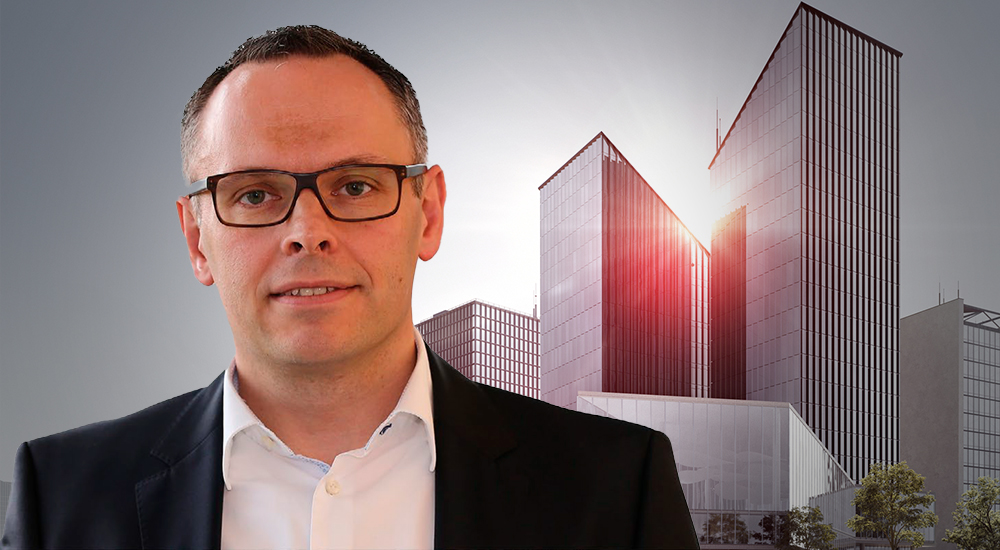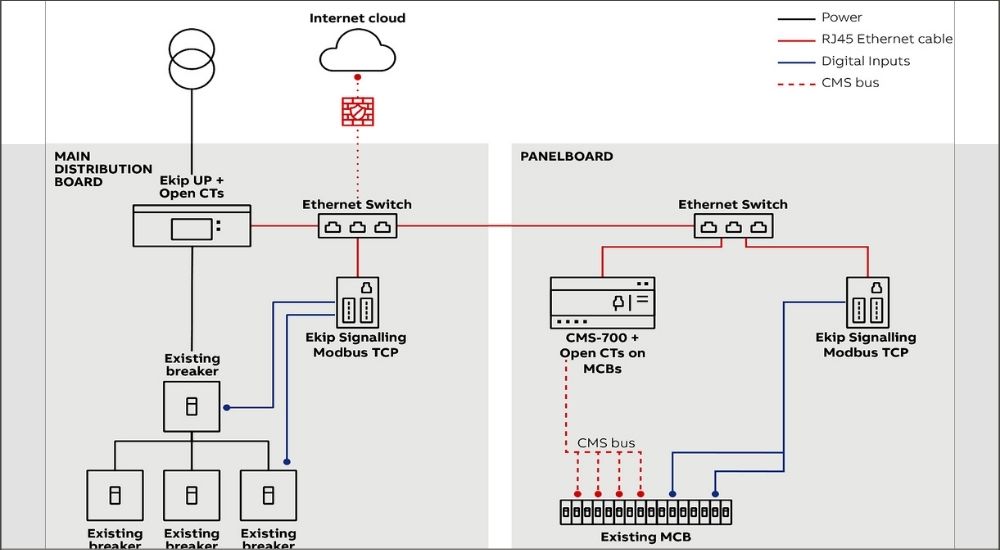Retrofitting, energy savings, automation

ABB has a wide portfolio including buying accessories, smart home residential applications, and commercial building automation. Electrification is a global business because you need electricity everywhere.
“In Middle East, all of our divisions are quite well represented. Most of the 21 divisions of ABB are somehow active in the UAE,” says Thorsten Muller, Head of Global Product Group, Building and Home Automation Solutions, ABB.
ABB has set for itself certain targets. “The first one is we want to become carbon nuclear with all of our operations by 2030. The second is we want to support our customers with eco-friendly solutions to bring down their CO2 emission by a hundred million tons by 2030,” says Muller.
If you take a building of 5,000 sqm, ABB can produce an energy saving of 25%, and this saving in cost gives a return of investment in two years. “After two years, you are just generating better profits and that is super attractive.”
Just five years ago, that would not have been possible using traditional technology and it would require many years to achieve the return on investment.
When you look at expectations of shareholders, many of the investment funds require ESG performance. Otherwise, there will be no investments in the future.
“If you look into energy distribution applications, like the intelligent microgrid, ABB is very strong there, because this is really the heritage of the company. We are doing that for more than a hundred years,” says Muller.
Another important element is smart metering because that gives you the opportunity to see how much of the utility service is consumed. And then you can have an intelligent management layer on top, with balancing between different buildings and creation of a smart group.

Retrofitting of buildings
One fifth of all carbon dioxide emissions are caused by public buildings. The great majority of them are deemed to be energy inefficient and not compliant to energy efficiency standards and regulations. Revamping old buildings can bring considerable advantages in terms of savings and sustainability.
The Paris Agreement was opened for signature on 22 April 2016 at a ceremony in New York. The Paris Agreement’s long-term temperature goal is to keep the rise in mean global temperature to well below 2°C above pre-industrial levels, and preferably limit the increase to 1.5 °C, recognising that this would substantially reduce the effects of climate change. Emissions should be reduced as soon as possible and reach net-zero by the middle of the 21st century.
ABB is committed to supporting the Paris climate. And if you look into the building stock around the globe, only 3% of the global buildings are built as new, each year.
“If you want to hit the Paris climate goals, you have to work with the existing building stock. Otherwise, simply you do not have any chance,” adds Muller.
In Germany, 30% of the buildings are 15+ years old, and that is why ABB sees building automation as having a strong chance as part of retro fit and renovation applications.
“Retrofit is for us a significant upside. If you have a completely new building, you can unlock even more potential. But we are also very much focused on existing buildings,” explains Muller.
Market segmentation
There are three well-defined customer segments to initiate retrofitting solutions:
- Businesses having their built-up industrial estate.
- Large retail chains with global sustainability targets.
- Facility management groups skilled labour managing the premises.
Muller says the backbone required for successful delivery of building management solution is pretty much the same in all countries. “What we need is an intelligent platform, which can collect data, can analyse data and connect on it.”
Inside UAE, Muller sees a skew towards apartment buildings and the hospitality sector. And there is a significant opportunity to tap into the potential for generating energy savings.
Inside Dubai most of the wiring outlets are conventional. There is very limited automation in hotels. HVAC is controlled per room, there is no intelligence or automation built into the HVAC systems.
By bringing in IoT sensors the entire HVAC energy management system, becomes more intelligent and more autonomous.
“There is a very, big potential to save energy. In an average building, where we are deployed, energy cost is going down by 30% to 50%.” It is not possible to predict the energy savings since the energy consumption contracts are different in every country and locality.
A well connected and integrated building management system will automatically start cooling the room before the arrival of the guests. On the other hand, if there are no guests checking in, the building management system will allow the room to warm up slightly, saving energy.
Retrofitting existing building also requires being able to work through traditional data silos. Building management systems are dealing with siloed areas inside a typical building including security, HVAC, electrification, lighting.
“Taking the power of IoT it is much easier for us now to connect to different silos and to extract data and to work with that data.” Despite these successes Muller still feels, “we are just in the way of transitioning.”
ABB’s sustainability snapshot
- According to a study by Bain in 2021, the sustainability solutions market presents an opportunity of $100bn for ABB and is growing at a CAGR of 17%, reaching $380 billion in 2030.
- Accenture estimates the value of implementing a circular economy to be $4.5 trillion globally.
- Analysis by We Mean Business coalition has found that implementing the Paris Agreement will unlock at least $13.5 trillion of economic activity in the energy sector alone by 2030.
- Businesses without energy management as a core competency will look for partners who can apply innovation across multiple sites using a range of digital technologies.
Key takeaways
- If you take a building of 5,000 sqm, ABB can produce an energy saving of 25%, and this saving in cost gives a return of investment in two years.
- When you look at expectations of shareholders, many of the investment funds require ESG performance.
- In Germany 30% of the buildings are 15+ years old.
- Another important element is smart metering because that gives you the opportunity to see how much of the utility service is consumed.
- Inside UAE, Muller sees a skew towards apartment buildings and the hospitality sector. And there is a significant opportunity to tap into the potential for generating energy savings.
- Inside Dubai most of the wiring outlets are conventional.
- Inside UAE, there is limited automation in hotels, HVAC is controlled per room, there is no intelligence or automation built into the HVAC systems.

One fifth of CO2 emissions are caused by old public buildings and revamping old buildings can bring considerable advantages in terms of savings and sustainability.





